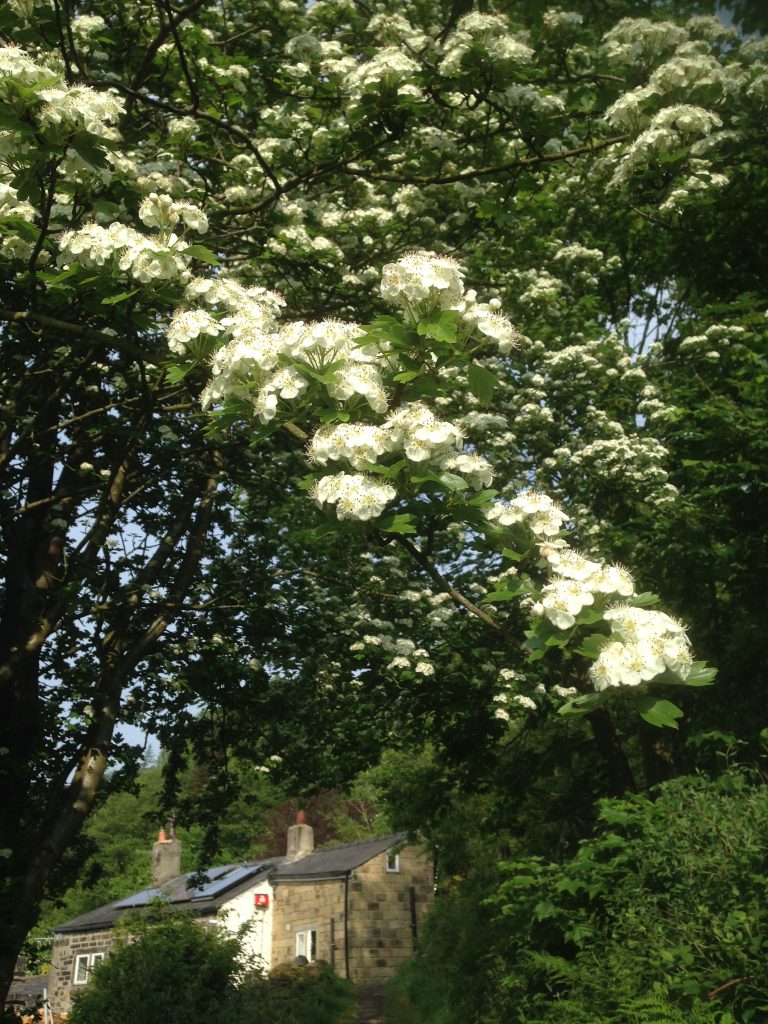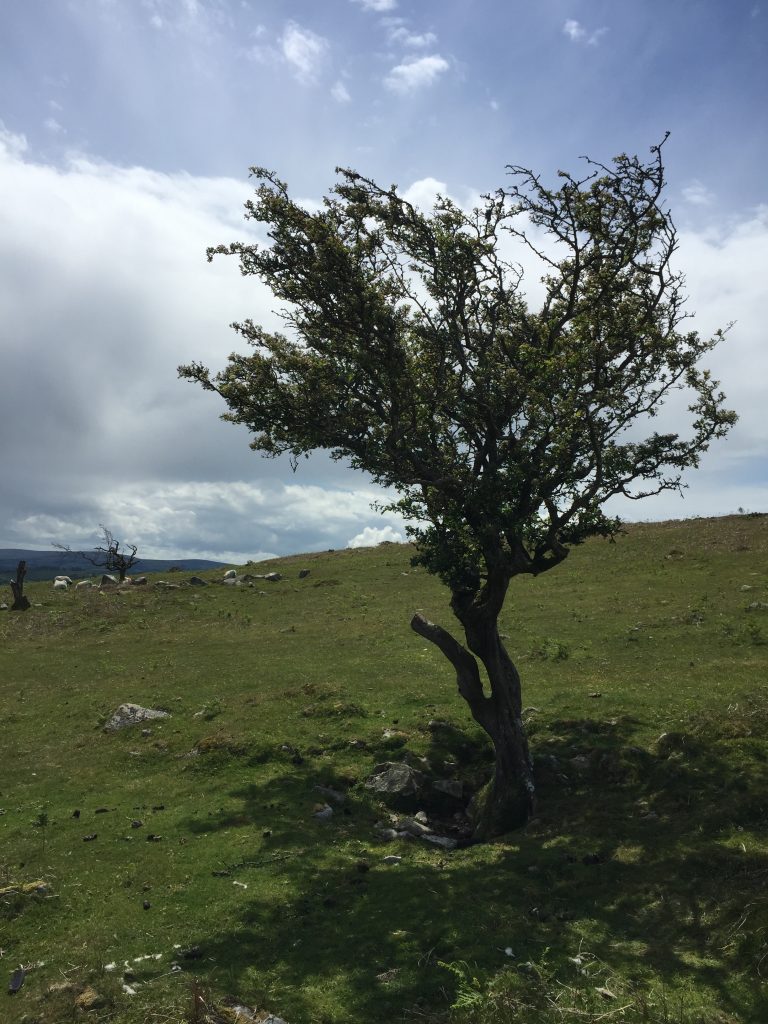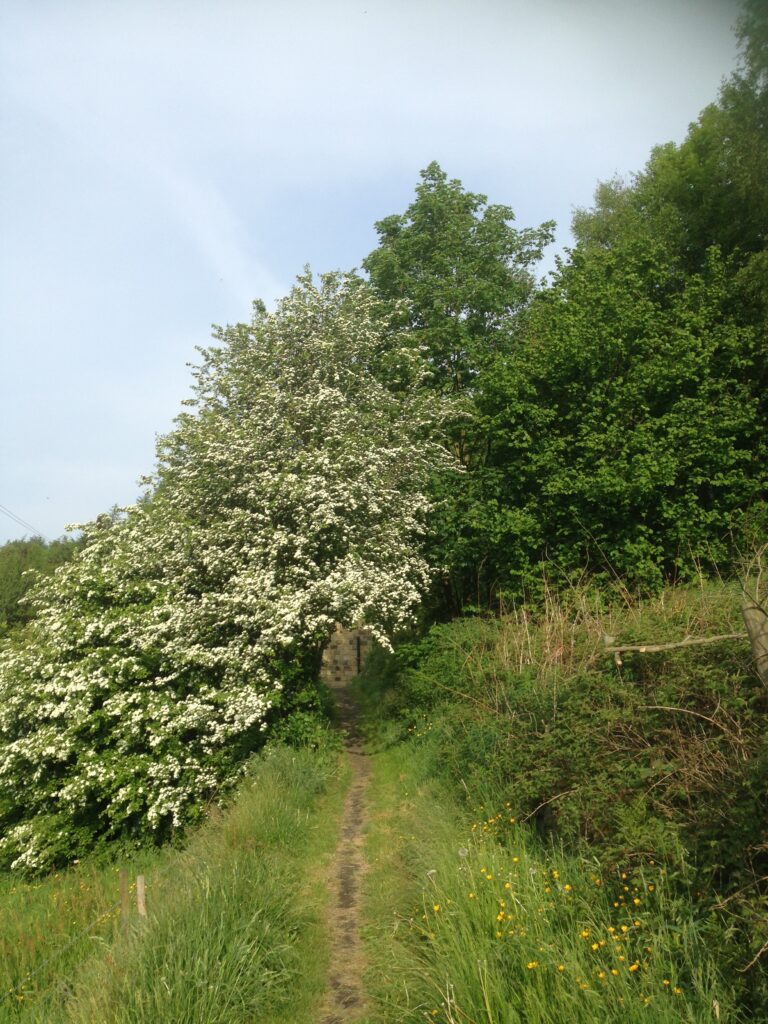Uses

The wood when reaching a decent size was used for small wooden items. The roots were used to make boxes and combs because it has a fine grain and polishes up beautifully. It makes excellent fuel, known to be the hottest firewood going. Charcoal made from the hawthorn wood is said to be able to smelt pig-iron without needing extra blasts of air. The hawthorn is often used to graft fruit trees onto it-namely medlar and pear. A liqueur used to be made using the Hawthorn berries with brandy. The young spring leaves are edible and have a nutty flavour. The berries can be made into jelly, wine, ketchup and are ascribed many medicinal properties (see below). The flowers can also be eaten. For further details of what parts to eat refer to https://www.eatweeds.co.uk/hawthorn-crataegus-monogyna
Myths and legends
The tree was formerly regarded as sacred, perhaps because of its association with the Crown of Thorns placed on Christ’s head. Many country villagers in the past believed that the Hawthorn flowers still bear the smell of the Great Plague of London. The old saying ‘Ne’er shed a clout till May is out.‘ is often believed to mean the may blossom of the Hawthorn tree, although some dispute it means the month of May. As both happen around the same time it’s six of one and half a dozen of the other. (Ne’er shed a clout means never stop wearing extra clothing).

Medicinal uses

Traditionally it has been used as a cardiac tonic for heart troubles. The berries and flowers have astringent properties and have been used in decoctions to cure sore throats. They have also been used to help with kidney problems. the berries are know to have anti-oxidant properties. For moe information see the following link: https://www.permaculture.co.uk/articles/many-benefits-hawthorn
This information is purely for interest, any use of this as a medicine needs to be taken under the instruction and guidance of a registered herbal practitioner.
Medical disclaimer
This post is not intended to provide diagnosis, treatment or medical advice. Any mention of medicinal uses are for informational purposes only. The use of any herb or derivative is entirely at the reader’s own risk. The author of this post cannot be held liable for anyone using these medicines. It is strongly advised that any usage is in consultation with a registered herbalist and/or qualified doctor
Check out this link for more detailed identification of the Hawthorn tree: https://www.woodlandtrust.org.uk/trees-woods-and-wildlife/british-trees/a-z-of-british-trees/hawthorn/
« Back to blog page